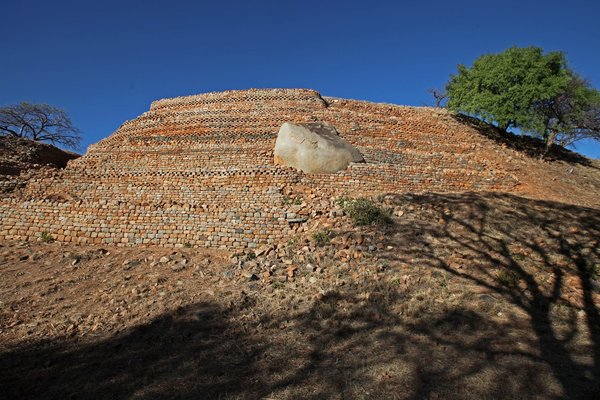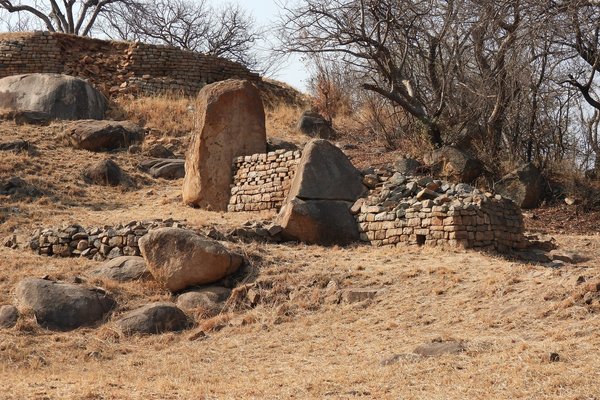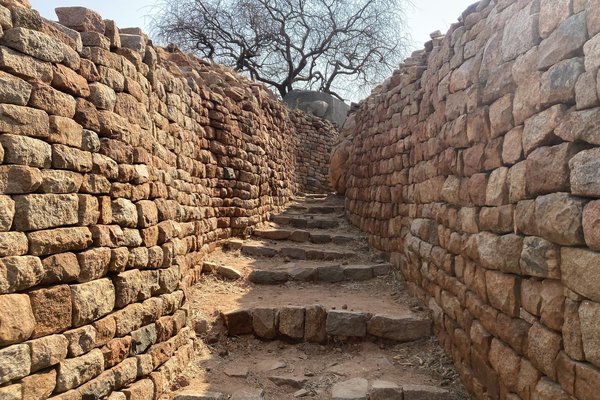Zimbabwe
Khami Ruins
Khami Ruins National Monument comprises the archaeological site of the second largest stone-built monument in Zimbabwe.
The dry-stone structures were enhanced by decorative friezes. It was created during the Torwa dynasty and became the region’s next capital after the abandonment of Great Zimbabwe. Imported goods like Ming porcelain and Spanish silverware were found, which hint at a wide range of trading contacts.
Community Perspective: An easy site to visit with your own transport from the city of Bulawayo, but it cannot stand comparison to Great Zimbabwe. Nearby Naletale (a TWHS) reportedly has the most interesting patterned stonework of all the Zimbabwes.
Site Info
Official Information
- Full Name
- Khami Ruins National Monument (ID: 365)
- Country
- Zimbabwe
- Status
-
Inscribed 1986
Site history
History of Khami Ruins
- 1986: Inscribed
- Inscribed
- Type
- Cultural
- Criteria
- iii
- iv
Links
- UNESCO
- whc.unesco.org
- Official
-
- zimbabwetourism.net — ZimbabweTourism Authority
- Related
-
- bulawayo1872.com — From Bulawayo "Portal" with link to "trail guide" and photos
- en.wikipedia.org — Wikipedia
All Links
UNESCO.org
- whc.unesco.org — whc.unesco.org/
Official Website
- zimbabwetourism.net — ZimbabweTourism Authority
Related Resources
- bulawayo1872.com — From Bulawayo "Portal" with link to "trail guide" and photos
- en.wikipedia.org — Wikipedia
Community Information
- Community Category
- Archaeological site: Civilizations of Sub-Saharan Africa
Travel Information
Recent Connections
-
No Map
-
Bantu peoples
Butuwa
-
Perfect Inscriptions
1986
Connections of Khami Ruins
- History
-
-
Located in a Former Capital
Rozwi Empire (1684-1834) -
Iron Age
"The largest concentration of stone walling and terracing at Khami surrounds a prominent hill overlooking the Kame River. This was almost certainly the residence of the Mambo (king) although several ceremonial objects found during excavations suggest that it was also a centre of ritual in the Iron Age town."(see link) -
African Kingdoms
Kingdom of Butua (1450 - 1683)See en.wikipedia.org
-
Bantu peoples
Butuwa
-
- Architecture
-
-
Dry Stone Construction
"a complex series of platforms of dry-stone walled structures" (OUV) -
Restored by anastylosis
"Restoration by analystolisis (as was used in 1991 and 1996) ensures that no new materials are introduced to the fabric of the site and promotes use of traditional methods of construction." (Periodic Reporting 2001)
-
- Damaged
- World Heritage Process
- Human Activity
-
-
Man-made Terraces
"is dominated by a series of terraced stone ruins" (see link) -
Ancient Board Games
"Tsoro game board - several examples can be seen at Khami, marked out on granite boulders. This game, which is still played, uses small rounded river pebbles as counters." (see link)
-
- Constructions
-
-
Granaries
There's a structure called "Grain Bin"
-
- WHS on Other Lists
-
-
World Monuments Watch (past)
Khami National Monument (2000, 1996)
-
- Timeline
-
-
Built in the 16th century
"According to Carbon 14 dating methods the city grew between ca. 1450 and 1650" (AB). Among goods found are "16th century Rhineland stoneware, Ming porcelain pieces which date back to the reign of Wan-Li (1573-1619)" (AB)
-
- Science and Technology
-
-
Archaeological potential
"still has a considerable archaeological potential" (AB ev)
-
- WHS Names
-
-
Named after a River
"The site is located to the west of the Khami River, after which it is named" (AB ev)
-
News
No news.
Recent Visitors
Visitors of Khami Ruins
- A. Mehmet Haksever
- Ask Gudmundsen
- Atila Ege
- ctravel
- del
- Dolemite92
- Els Slots
- Eva Kisgyorgy
- Fan Yibo
- Felicité
- Gernot
- Iain Jackson
- Jon Opol
- Ken DJ
- Lameduck99
- Luis Filipe Gaspar
- marcel staron
- Nihal Ege
- Priyaranjan Mohapatra
- Randi Thomsen
- Roman Bruehwiler
- Solivagant
- Svein Elias
- Tatiana Nikulnikova
- Thomas Buechler
- Thomas van der Walt
- Wojciech Fedoruk
Community Reviews
Show full reviews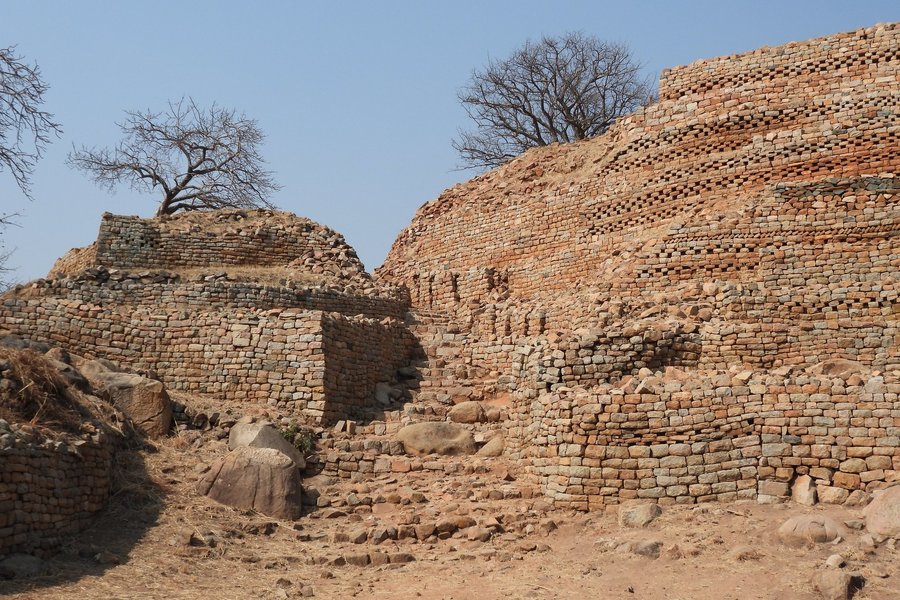
The Khami Ruins have not been covered well by the reviews so far; the only two existing ones are short and date from visits in the 1990s. The ruins aren’t visited much by our members in general, either; they are ranked #1007 out of 1157 currently. And it isn’t that they’re particularly hard to get to – they are open daily and lie just some 20km outside of the city of Bulawayo, which in itself is an excellent hub for 3 of Zimbabwe’s 5 WHS.
I went there fresh off the plane, having arrived on a direct 1-hour flight from Johannesburg to the international airport of Bulawayo. I picked up a rental car and drove across the sprawling city to the west. I had Waze direct me, until on the outskirts of the city, I started noticing signposting towards ‘Khami Ruins’. I decided to follow those, which turned out to be a good choice, as Waze wanted me to turn into the access road to the Khami prison (no, not the archeological site of a prison).
The final 5km of the drive is on an unpaved road, and the 5km before that the asphalt only covers half – the rest is potholes and sand. You’ll pass a house now and then, but I don’t see the city encroachment becoming a problem quickly. The signposting stays excellent til the end. You will enter the (unmanned) gate with the ‘Welcome to Khami Unesco World Heritage Site’ sign and the WH logo, and …
Keep reading 0 comments
We visited Khami in 1990, on a day trip from Bulawyo (hitching). It was great to be alone at the site - there weren't even staff there to take payment and to walk around with no guides(people ,signs or maps). but it did mean we didn't have much information on what we were seeing.
We also hitched to a round church in a local village with lots of murals - biblical stories but where all the key figures were African - it was this which was the highlight of the day ( I wonder if the church is still there? )
Keep reading 0 comments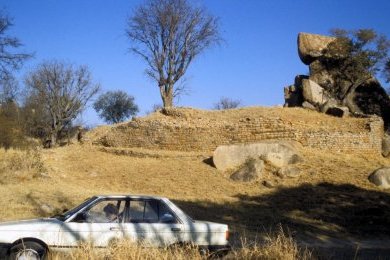
It is perhaps a bit surprising that both Great Zimbabwe AND Khami ruins are registered as separate WHS. They are however from different, albeit related, cultures. Historically the former preceded the latter. My personal view is that, unless you are either a “WHS nut” or particularly interested in pre-colonial African ruins/history then you should concentrate your efforts on getting to Great Zimbabwe and give Khami a miss.
If you are in Bulawayo then Khami is only 22kms away but you will need your own transport or have to pay for a tour and the entrance fees for foreigners reflect a certain lack of realism as to the value of what is “on offer”.
Khami is a court complex of the Torwa state from around the 15th century. Like all “Zimbabwes” the palace is built on a hill and a number of stone walls from the structures partially remain. I didn’t personally didn’t find it a particularly worthwhile place to visit when we did so in 1997.
A few miles away however the ruins of Naletale were in a totally different class. Not only was there no entrance hassle, the site offered complete peace and the most wonderful patterned brick/stonework – far better than you will see at either Great Zimbabwe or Khami. There are apparently 5 types of pattern and Naletale has fine examples of all of them. From a distance it looks like a tapestry in stone. Look at a photo at http://www.geocities.com/thetropics/island/6697/africa9899/pic10.html
Keep reading 0 comments
